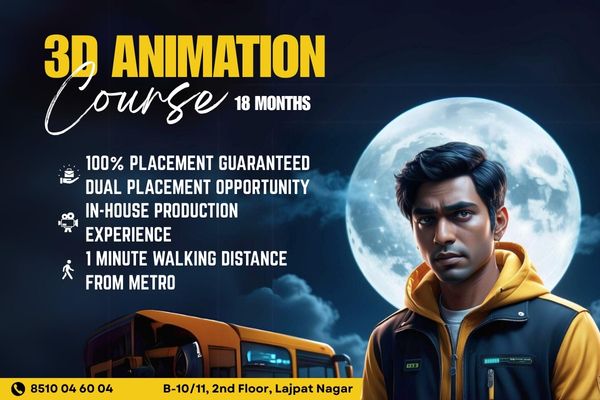
Top 10 VFX Animation Courses in Delhi If you are passionate about visual effects (VFX) and want to pursue a career in this field, it is important to find a good school to learn the necessary skills. The Indian film Read More …
Cinemac Animation Delhi is one of the best Graphic design, web design, digital marketing institute in delhi

Top 10 VFX Animation Courses in Delhi If you are passionate about visual effects (VFX) and want to pursue a career in this field, it is important to find a good school to learn the necessary skills. The Indian film Read More …
Are you aspiring to join the exciting world of animation? Finding the best animation institute in India is the first step to turning your dreams into reality. With a plethora of options available, it’s essential to identify the No 1 Read More …

Visual effects (VFX) is a rapidly growing field that is used in a wide variety of industries, including film, television, video games, and advertising. VFX artists use computer software to create realistic and immersive visual effects that can bring stories Read More …
Introduction VFX animation, or visual effects animation, is a captivating field that combines artistic creativity with technical expertise to bring imaginary worlds to life on the big screen. Whether it’s the awe-inspiring explosions in an action movie or the breathtaking Read More …
Introduction In today’s rapidly evolving digital age, the demand for visually stunning and immersive experiences has skyrocketed. This has paved the way for exciting career opportunities in various fields, and one that stands out prominently is VFX animation. But what Read More …
VFX courses: Visual effects (VFX) is the process of creating or enhancing imagery in a film or other moving image. VFX artists use a variety of techniques to create realistic and believable images, including computer-generated imagery (CGI), motion capture, and Read More …
VFX Course Fees: What You Need to Know Visual effects (VFX) is a rapidly growing field that is used in a wide variety of industries, including film, television, video games, and advertising. VFX artists use computer software to create realistic Read More …

Visual Effects or VFX animation is a powerful tool that has been used in the film, television, and gaming industry for decades. It involves adding special effects and digital elements to live-action footage to create a new and enhanced visual Read More …

To become a VFX artist, there are several courses that you can pursue after completing your 12th standard education. Here are some of the options: Bachelor of Fine Arts (BFA) in Animation and VFX: This is a 3-year undergraduate course Read More …
When it comes to designing a user interface (UI) and user experience (UX) for a website or application, there are certain best practices that can make the process smoother and more effective. UI/UX design is an essential aspect of creating Read More …